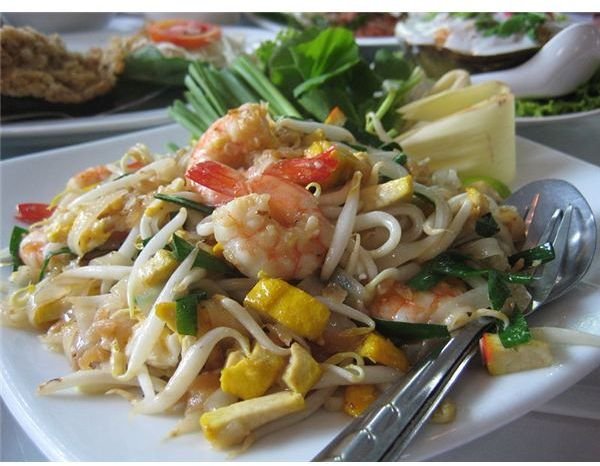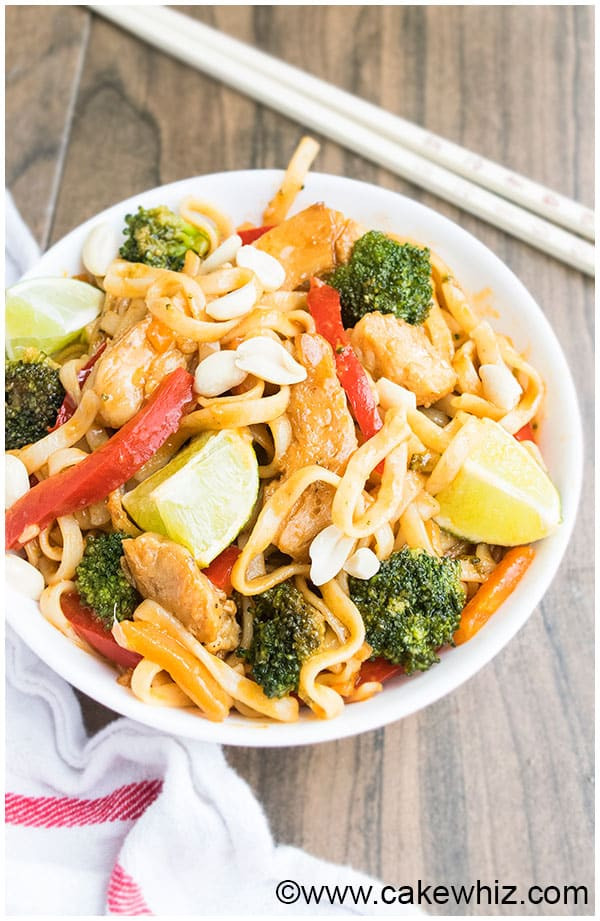

Starch-heavyĪnother potential downside to pad thai is its substantial amount of starch - a carb - from the flat rice noodles. While sodium is an essential nutrient, eating too much in your regular diet may increase your risk of high blood pressure and stomach cancer over time ( 15, 16, 17, 18). However, the amount of sodium present is still significant at 38% of the daily value ( 13).ĭried shrimp also offers a considerable amount of sodium, with one ounce (28 g) of dried shrimp providing 624 mg sodium, contributing to 27 percent of the daily value ( 14). While pad thai only includes small amounts of fish sauce, one tablespoon (16 g) contains 1,260 mg of sodium, equivalent to 55% of the daily value ( 12).Ĭompared with fish sauce, soy sauce has less sodium per tablespoon (16 g). In Thai cuisine, fish sauce is an everyday staple, and it’s sometimes even used instead of table salt. The three main high sodium ingredients in pad thai are fish sauce, soy sauce, and dried shrimp.įish sauce is a brine from salting and fermenting fish, such as anchovies or krill. While pad thai offers a wide range of essential nutrients, it’s high in sodium. While pad thai may offer nutrition and health benefits, there are two points you may want to consider if you eat this dish frequently. Research also suggests that mung beans may reduce your risk of certain cancers ( 8, 9, 10, 11). Mung bean sprouts: They are low in calories and are a good source of vitamin C and folate.Like eggs, chives also contain lutein and zeaxanthin ( 6, 7). Chives: Every tablespoon offers 5% of the daily value of vitamin K.Vitamin A and antioxidants may reduce your risk of cataracts and macular degeneration ( 4, 5). Eggs: They are considered one of the most nutritious foods, offering protein, plenty of vitamin A, and antioxidants like lutein and zeaxanthin.Iodine is essential for thyroid function and supporting a healthy brain ( 3). Dried shrimp: Shrimp is a rich source of protein and one of the best sources of iodine.Chicken: Chicken is an excellent source of protein, which is vital for building and repairing muscles and plays a role in bone health and calcium metabolism ( 2).Flat rice noodles: They are rich in carbs, which serve as an energy source to fuel our bodies, and selenium, an essential mineral that supports the immune system.Pad thai is a nutrient-dense dish offering many nutrients and health benefits, primarily from: It’s most important to enjoy a well-rounded diet with plenty of foods that nourish your body and spirit. While keeping calorie estimates in mind may support weight management if that’s your goal, it’s not necessary to count calories to eat a healthful diet.

Keep in mind, though, that pad thai can vary in calories and nutritional composition, depending on how it’s prepared, the ingredients used, and what your portion size looks like. In general, prepackaged pad thai is considered low to moderate in calories. Your daily caloric requirement is dependent on factors like your age, sex, and activity level.

Rice noodles are gluten-free and are made from rice flour and water. Flat rice noodles: They are the main ingredient of the dish.Generally speaking, traditional pad thai is a stir-fry that includes: Its ingredients offer unique flavors, textures, and aromas. Pad thai is a traditional street dish in Thailand.


 0 kommentar(er)
0 kommentar(er)
